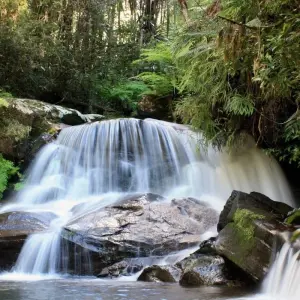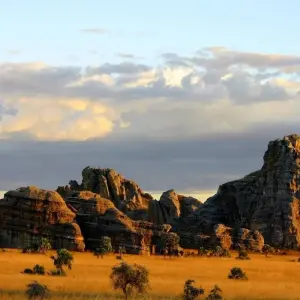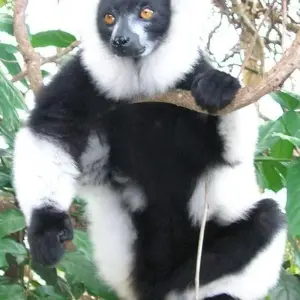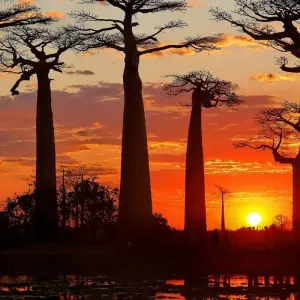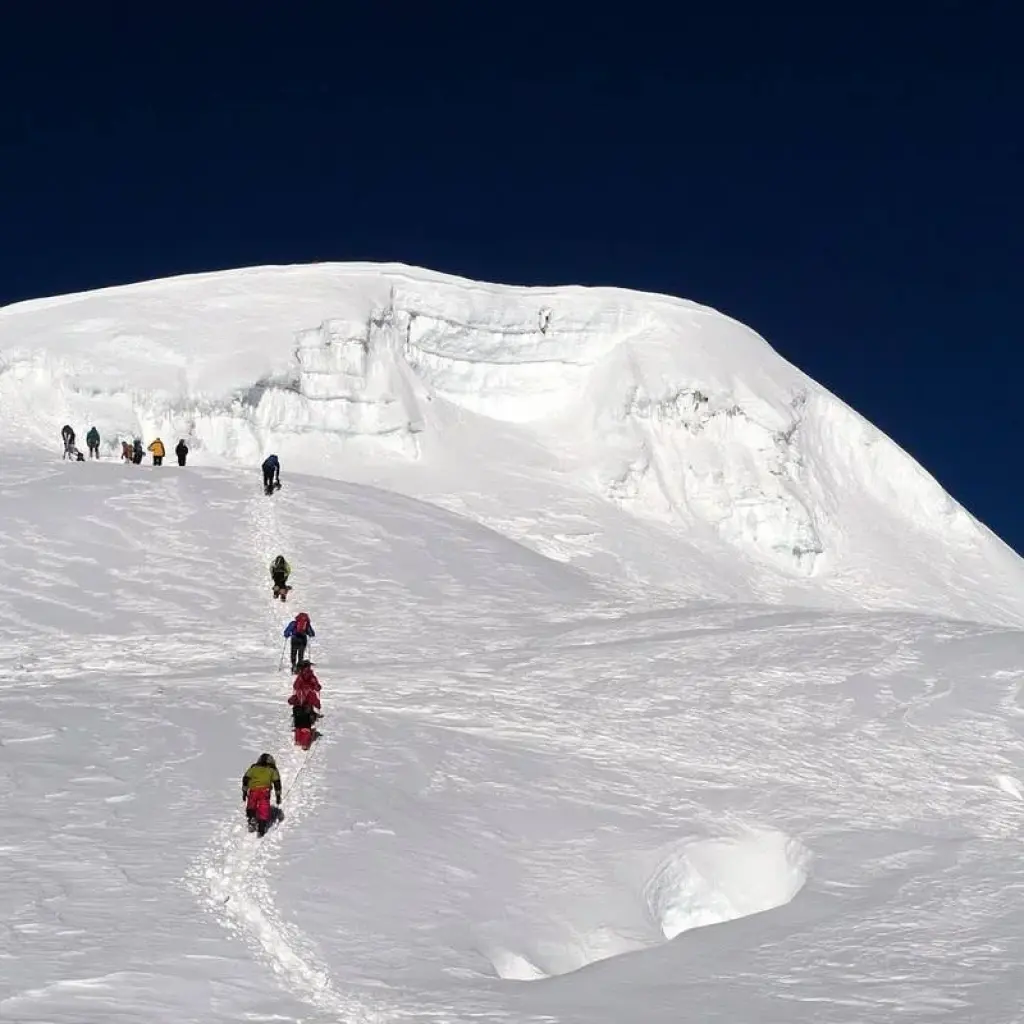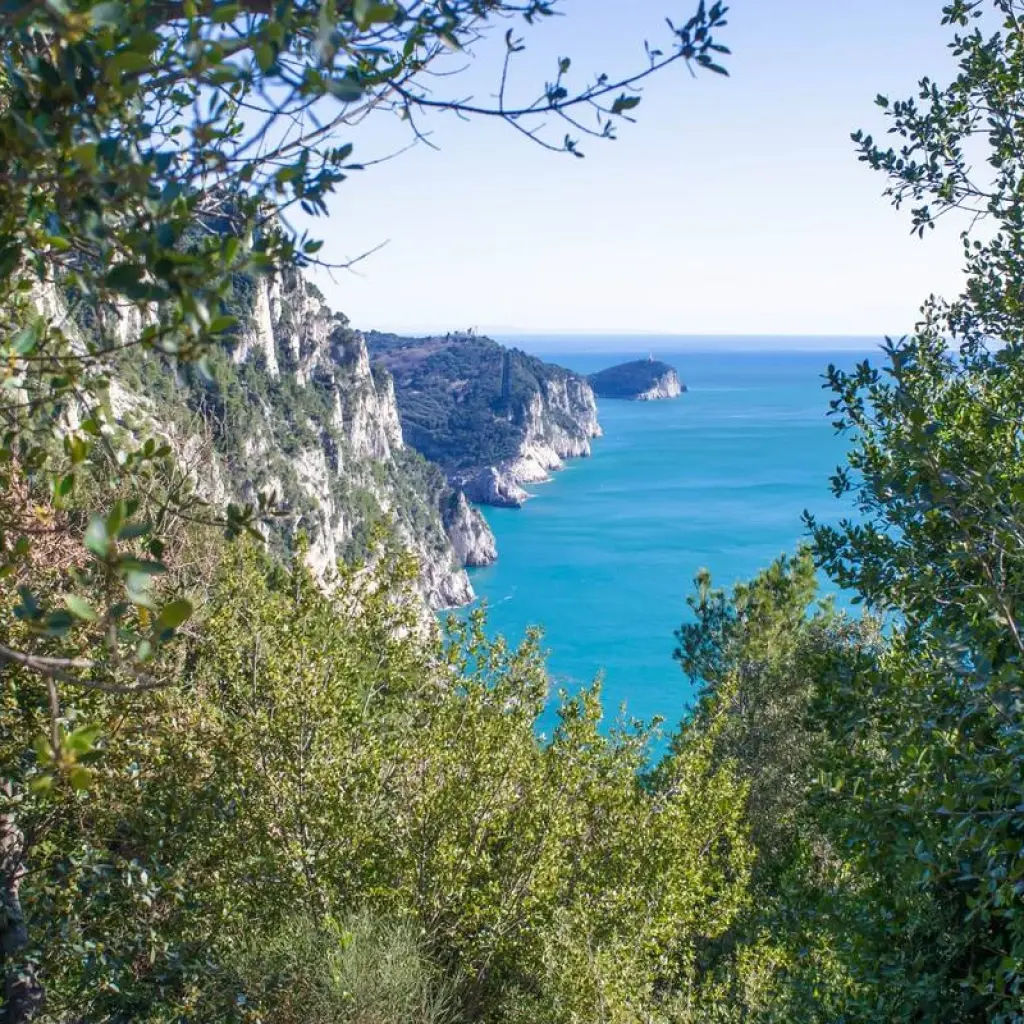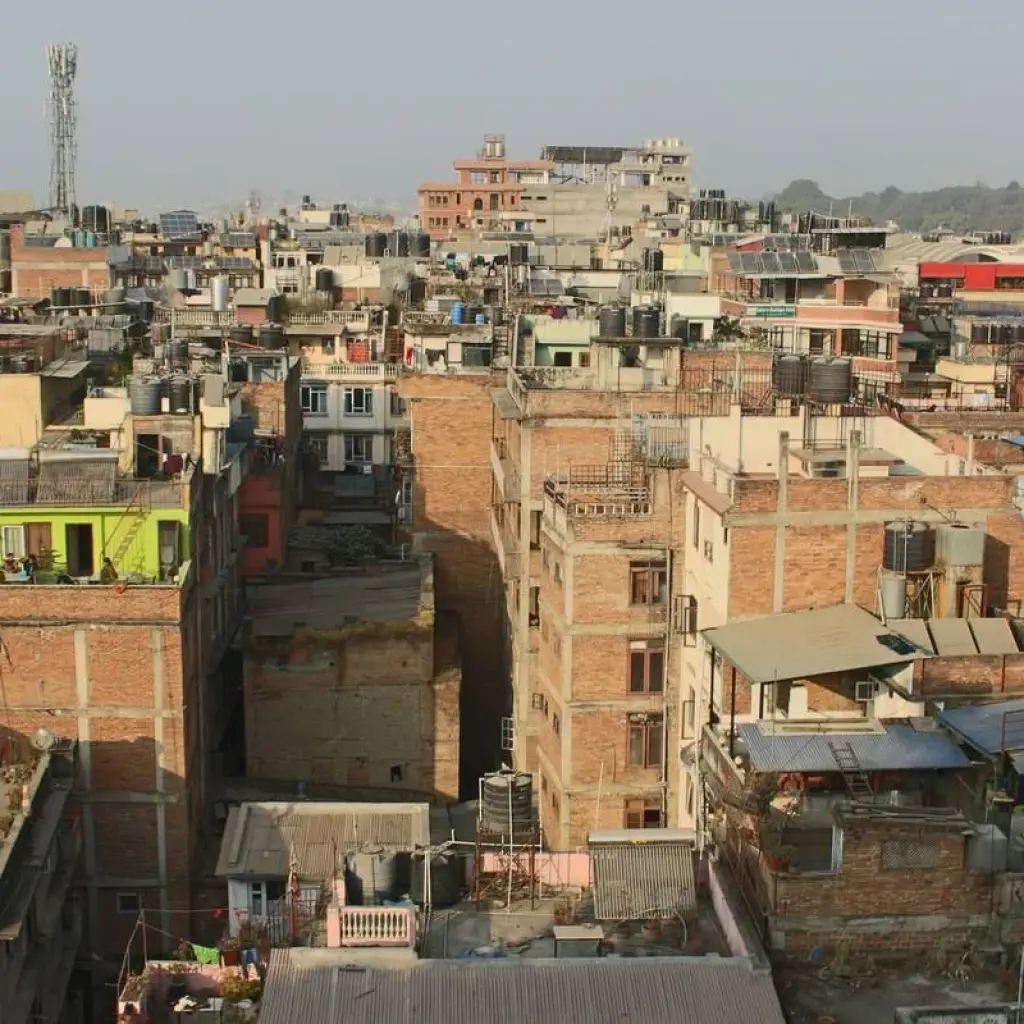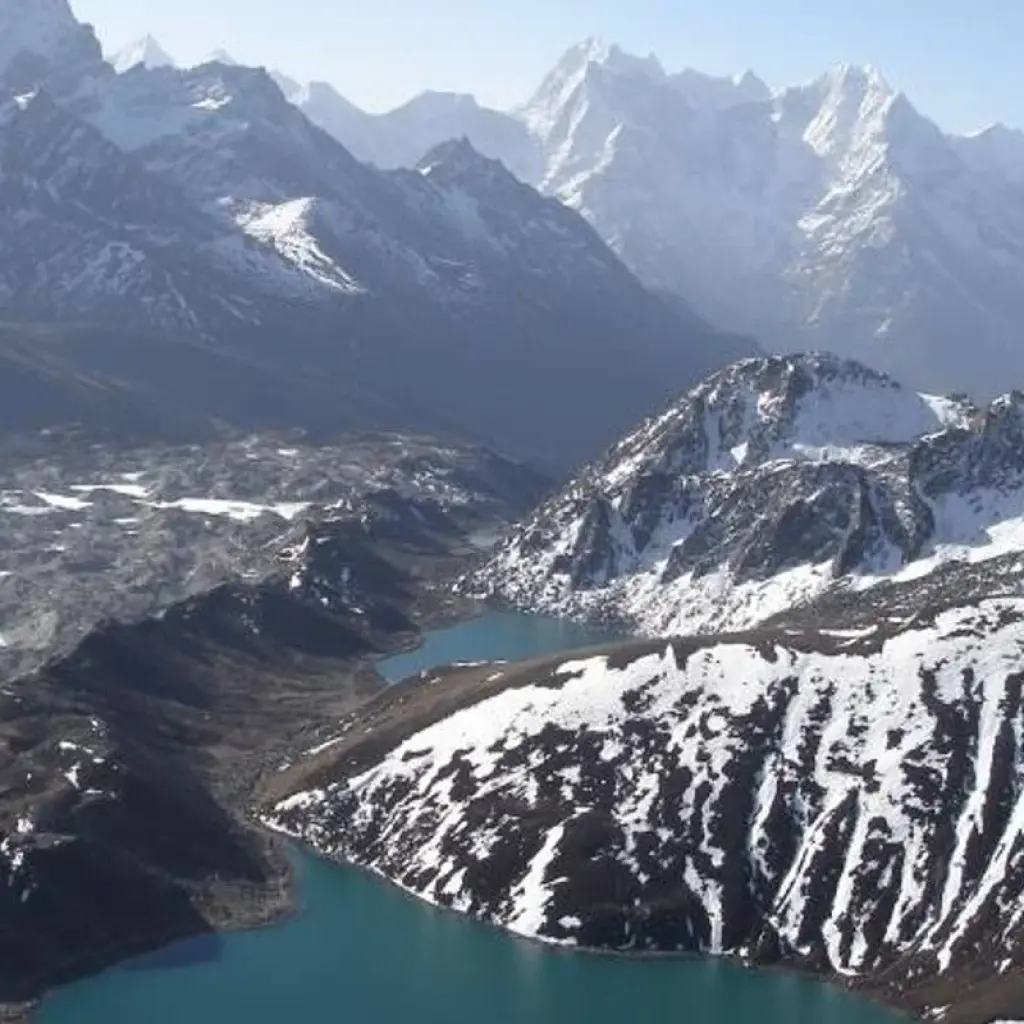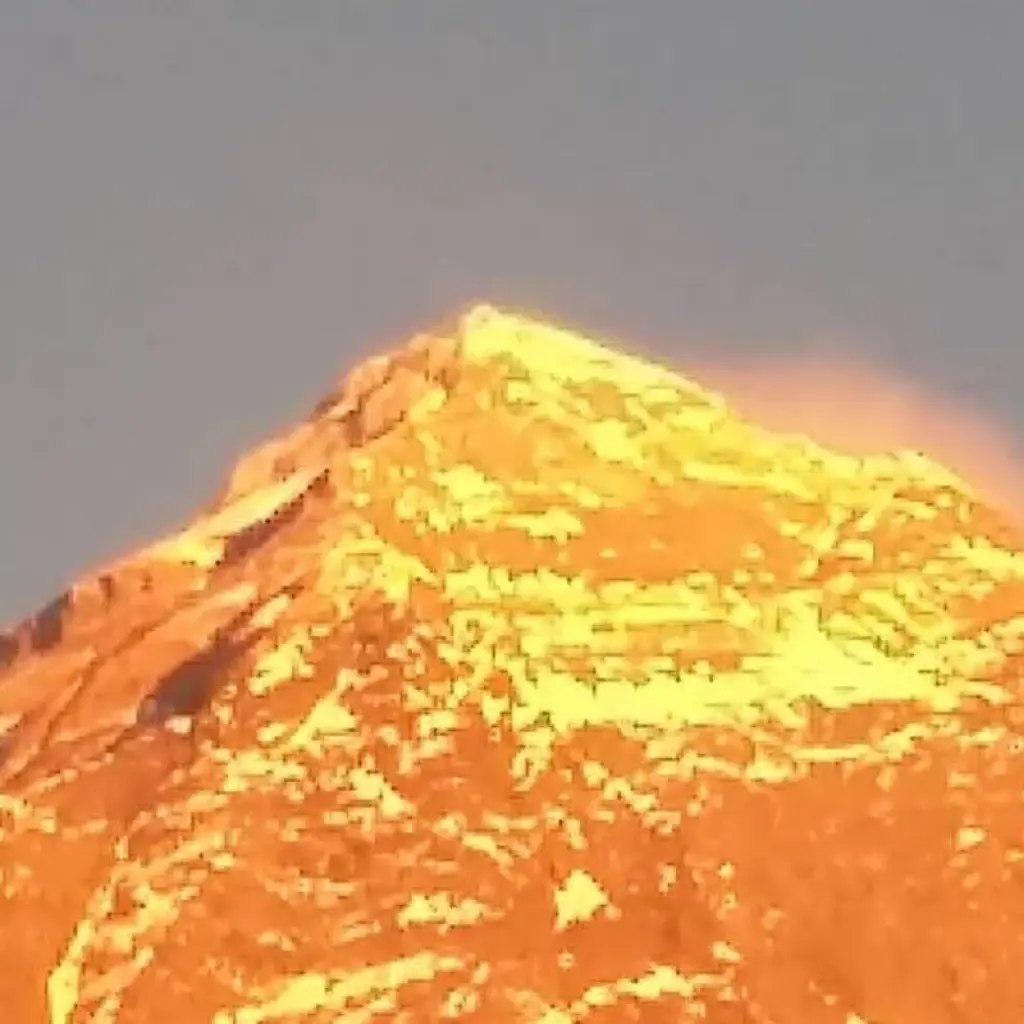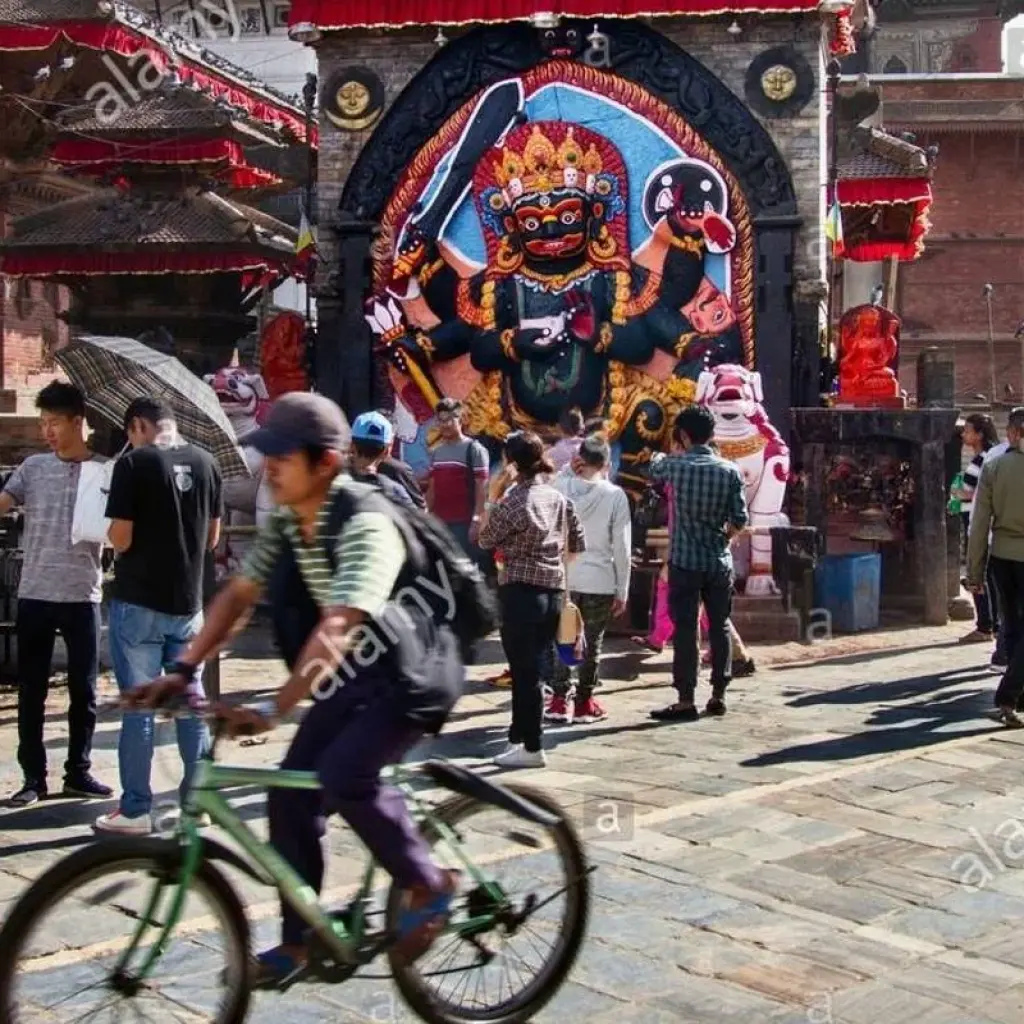Arrival at the Ivato International Airport, Antananarivo. You will be welcomed by HT Agency Tours representative. Meet and greet. Once you have passed customs formalities, it is to the Guide to smooth through the rest of the arrivals process - changing money, setting up your phone with a new SIM card, and anything else you need. This will make our contact easier. Then, drive directly to Andasibe. . On the national road number 2, to the east, we enjoy panoramic views of the stepped rice fields. We see various mountains and then continue to the east through the green and luxuriant vegetation. On the arrival, after check-in at the hotel around 6:30PM, you end this day with a guided night visits which will take 1 hour and half, and then drive back to the hotel.
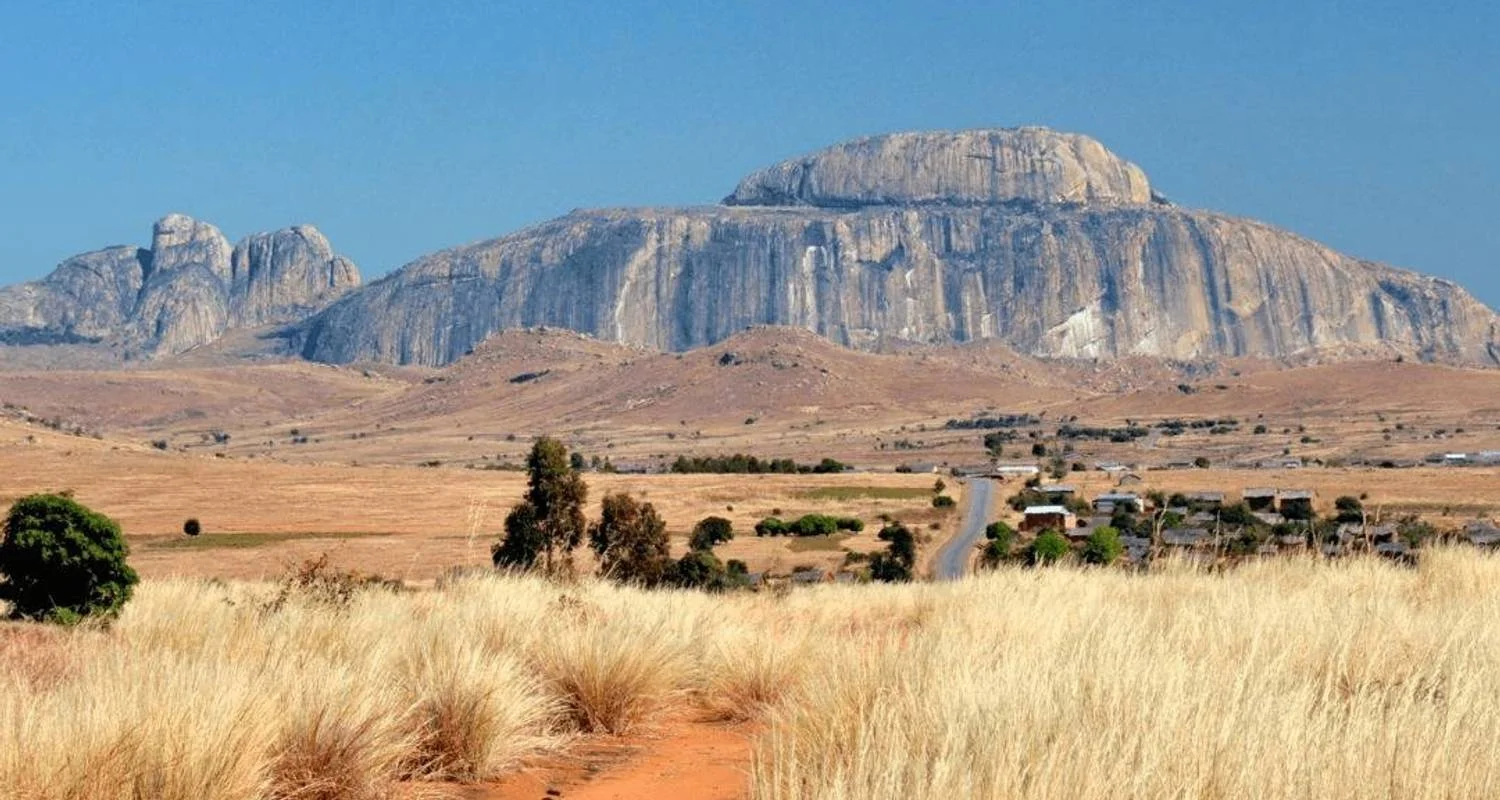
The pearls of Madagascar
Itinerary
This tour will take you from Antananarivo to Andasibe, Morondava, Kirindy, Antsirabe, Ranomafana, Isalo, and Tuléar :
• Andasibe – Mantadia National park
Andasibe–Mantadia National Park is about 150 km to the east from Antananarivo, along the RN2, and it can be reached in 3 to 4 hours by car. Comprising two distinct protected areas: Analamazoatra Special Reserve and Mantadia National Park, Andasibe-Mantadia National park is one of the most frequently visited site in the country, and one of the best places to observe lemurs in Madagascar. It is also one of the best primate-watching site in the world. This site is known to be the refuge for a wide variety of lemur species (14 diurnal and nocturnal species), including the famous Indri Indri, the Aye-Aye, the goodman’s mouse lemur, the Crossley’s dwarf lemur, the Eastern woolly lemur sifaka, and sometimes southern black-and-white ruffed lemur. 51 reptile species, 84 amphibian species, 72 mammal species, 117 bird species, and countless insectivorous bats that have been recorded. Mantadia is the one of the best birdwatching site on the Big Island. About the flora, with its lush and green vegetation this protected area contains a collection of evergreen vegetation epiphytic plants (plants living on other plants), palm trees, mosses, fern, bamboo, hardwoods, and precious woods, and pandanus. This park is also famous for its orchids with 120 inventoried species, entirely endemic. They bloom between September and January.
• Baobabs Avenue
About ten trees 30 meters high border this avenue, of the species Adansonia grandidieri, endemic to Madagascar. Baobabs, over 800 years old, known locally as Renala (in Malagasy for “mother of the forest”), are a heirloom of the dense tropical forests that thrived in Madagascar. The trees did not grow in isolation in this dry and bushy landscape but were part of a dense forest which has now disappeared (only 10% of primary forests remain in the country). Over the years, with the increase in the country's population, forests have been cut down for agriculture, leaving only baobab trees, which locals preserve both out of respect and for their value as a source of food and materials of constructions.
• Kirindy Reserve
Kirindy Forest or Kirindy Private Reserve is a vestige of primary dry forest located in the west of Madagascar, around 60 km northeast of the town of Morondava. It covers an area of 72 000 hectares. This site is part of the New Menabe Antimena Protected Area, located between the Tsiribihina River to the north and the Baobab Avenue to the south. Kirindy forest is home to a wide of animal species endemic to Madagascar, such a lemurs, crocodiles, bats, snakes, chameleons. The flagship species to see in Kirindy Forest is the Fossas. Several habituated individuals hand around the ecolodge, which makes for high quality viewing. However, fossas become more active from October onwards. There are also seven lemur species, including the dancing Verreaux’s sifaka and the red-fronted brown lemur. Night walk tend to be very productive and offer chances to see the Malagasy giant jumping rat, the red-tailed sportive lemur, the grey mouse lemur, the pale fork-marked lemur, and the Madame Berthe’s mouse lemur. In addition to its wildlife, Kirindy Forest is also home to a luxuriant flora. Its tall trees are covered with mosses an epiphytes, creating a unique ecosystem.
• Antsirabe
Antsirabe– whose name means “Where there is much salt”, in reference to itsmineral-rich waters – is known for its water, renowned throughout the world for its therapeutic properties. It is also famous for its textiles, tobacco, and agricultural production. This town is one of a very pretty and very clean town and one of its most prosperous. Its broad large avenues are shaded and bordered by jacaranda trees. During the flowering season, these colorful plants make the town even more charming with all the jacaranda trees purple flowers layers associated with rickshaws, dominated especially by the sharp orange color, gives a very particular stereotype and an exceptional key. Here, the air isvery pure. The mountainous region of Antsirabe offers many hiking and trekking routes. The volcanic lakes of the region are also a major tourist attraction, containing many ancestral legends and mysteries, two most known lakes which make the wonders of Antsirabe are Andraikiba and the extraordinary and mysterious Tritriva lake.
• Ranomafana National Park
The Ranomafana National Park is located in the southeast of Madagascar straddling the regions of Upper Matsiatra and Vatovavy Fitovinany. It is 412 km south-east of Antananarivo, 65 km north-east of Fianarantsoa and 139 km west of the town of Mananjary. Terrestrial National Park classified World Heritage Site with its dense low-lying humid forest (600-800m), its dense humid forest of medium altitude (800-1400m), its bamboo forest, its marshland where plant and animal species such as Pandanus, Varecia variegata variegate, Crayfish, Limnogale Mergulus choose as habitat. 6 species of fish, 74 species of insects, 90 species of butterfly including 4 rare species, 350 species of spiders, 6 endemic species of crustaceans and a subspecies of crayfish of the group of Astacoides. 58 species of reptiles, 98 species of amphibians, 115 of the 257 species of birds of Madagascar the majority of which is endemic. 12 species of lemurs, 7 species of carnivorous mammals and 20 species of insectivores, 07 species of bats including Myzopodaaurita, a monogenous that exists only in Madagascar. There are also 13 species of rodents. The Ranomafana forest is of the rainforest type whose hard core considered as primary forest is distant from the road axis. There are Apocynaceae, Euphorbiaceae and Rubiaceae, Dypsis sp and Phloga sp of the family Palmae, Aspleniumnidus, orchids of the genera Bulbophyllum and Eulophiella. Large areas of secondary forest are occupied by Psydium cattleyanum of the family Myrtaceae. Tropical hardwoods such as rosewood or Dalbergia sp, maka or Weinmania sp and varongy or Mespilodaphne tapack are also visible. A profusion of rare plants is also identified: ferns, bamboos and hundreds of orchids. Chinese guava occupies more and more spaces and is dispersed by lemurs and frugivorous birds.
• Isalo National Park
Isalo is located in the south of Madagascar in Ranohira. The park extends over an area of 81,54 hectares. Isalo is home to a population dominated by the Bara ethnic group mixed with communities of various origins who settled there because of the exploitation of sapphire in the surrounding area of Ilakaka. The territory is also a historically rich archaeological site, as it retains the continental plate connecting Madagascar with Africa, two million years ago.A true tourist attraction for its geomorphological singularities, at the same time varied and unique in the world, it is the most visited site on the island. The park is of rock structure that is globally shaped by the erosion of reddish mountainous sandstones dating back to the Jurassic era of 200 million years ago, extending for nearly 100 kilometers in the north-south direction.Its varied sculptural form is a chain of deep canyons, peaks up to 200 meters high, masses of granite and rock blocks of unstable appearance. There are currently 82 species of birds, 33 reptiles, 15 amphibians, and 14 mammals including seven primates. Among these, there are the maki, sifaka, and varika. As far as tourists are concerned, the main attractions are the pedestrian routes which, from the outset, are reminiscent of a decorative façade of the Far West.
Tour program
Arrival time in Antananarivo and drive to Andasibe
Start point
Antananarivo, Analamanga, Madagascar
Andasibe (Perinet)
After breakfast, you start with a guided visit at Analamazaotra National Park. It is better to leave the hotel early (about 7:30AM) to meet easily the Indri-Indri and the Diademed Sifaka in their forest home. The visit takes about 3 hours. Within a mile of the park you can hear the peculiar call of the indri very early in the morning until noon and again in the late afternoon. Indris (called Babakoto in Malagasy) are the largest living lemurs at all reaching up to 1 meter. Andasibe is the best place to observe the Indris given that there are a couple of families habituated to humans. It lives in small groups and cannot survive in captivity. There are several legends trying to explain its origins since it is considered a sacred animal in the whole Madagascar. Apart from the Indri, another 13 lemur species inhabit these forests, such as woody lemur, grey bamboo lemur, diademed sifaka, brown lemur, red mouse-lemur, red-bellied lemur, black and white ruffed lemur. In the afternoon we visit Andasibe village, known as “the City of Waters”, and stroll through the local market to see some Malagasy craftspeople working. Then, you will enjoy an amazing up close and personal experience with lemurs on the private Lemurs Island and then on to view many other species in the Vakona Reserve Zoo, where you will see many crocodiles in the huge river enclosure, native birds, and other wildlife in well-kept surroundings.
Drive from Andasibe to Antananarivo
Breakfast, then, we depart early back to the capital city and have around 4 hours drive through the spectacular eroded hills called lavaka. On the road, we visit the Peyrieras Madagascar Exotic. The famous exotic animal breeding centre owned by naturalist Andre Pereyras, where we see almost all the chameleon species of Madagascar – as well as leaf tailed geckos, lemur, cocquerel’s Sifaka, and other interesting animals, such as butterflies, moths (the giant Atlas Moth), and tenrecs.
Fly from Antananarivo to Morondava
After breakfast, transfer to the airport for flight TNR (Departure at 11:00am) to the west coast of the island, destination to Morondava MOQ (Arrival at 12:00pm). Then, check-in at your hotel. After lunch, enjoy the rest of the day in Morondava : Relax on the beach for the rest of the day, and admire the incredible sight of sunset.
Morondava with possibility to visit the Kirindy national park
For this day, you can choose whichever tour you want : visit of the Baobab Amoureux and Baobab Alley, or visit of Kirindy Reserve. Discover the most scenic road in Madagascar : Baobab Avenue. Stuning, this is the popular attraction all day long. However, sunset is the best and most popular time of the day.
It is also possible to visit the Kirindy Reserve. It is located, in the north, about 42 km following the secondary road which a bit dusty. Kirindy is the best place in the whole island to observe fosa. Other nocturnal species included: the rare Coquerel's giant mouse lemur and pygmy mouse-lemur, fork-crowned lemur, grey mouse lemur, western fat-tailed dwarf lemur and red-tailed sportive lemur. Several bats, tenrecs, mongoose and rodents complete the mammal population.Kirindy is also known for its endemic flora. There are three species of baobab: the Andasoniarubrostipa or the fony baobab, with a bottle shaped trunk with major horizontal branches, between 5 and 20 meters, the AndasoniaZa, a tall tree that ranges from 20 to 30 meters, and the Andasoniagrandidieri, the biggest of the six species of baobab, up to 30 meters.
Drive from Morondava to Antsirabe
Today, you will have a very long drive, so it is better to leave early Morondava (7:00AM). After breakfast, drive directly to Antsirabe with enjoying the beautiful landscape of the Menabe area, through the spectacular red hills. Some stops could be done on the road for pictures and breaks if it is necessary. Lunch in Miandrivazo, and then continue to Antsirabe. Our destination is the highland town of Antsirabe, with its wide colonial streets, volcanic lakes and colourful rickshaws. “The Place of Salt” is the centre of beer making in Madagascar and is known for its handicrafts. Founded by Norwegian missionaries in 1856, it is the only place which really feels and looks like a European city – with its elegant spa and the railway station. It has a temperate climate and so fruits and vegetables which grow in cooler parts of the world are grown here. Check-in at the hotel.
Drive from Antsirabe to Ranomafana
After breakfast, we will do a small city tour by Rickshaws (Visit: the railway station, the Independence Avenue and the famous Hotel des Thermes). We visit a number of the town’s famed craftspeople to watch them working on the precious and semi-precious stones that Antsirabe is famous for. Today we continue to wind our way through the Highlands’ scenic landscapes, where the houses are made with ornately-carved wooden balconies and shutters with bright colours. Further on we pass the “le col de tapia”, a type of tree resistant to bush fires. The landscape is still dominated by very photogenic rice fields, pine forests, eucalyptus trees and rocky hills. At the Malagasy arts and crafts capital, Ambositra, we stroll through the city with visiting workshops of Zafimaniry artisans – skilled sculptors working on marquetry rosewood and ebony.
Ranomafana National park
This morning we search Ranomafana National Park‘s rainforest for lemurs, accompanied by our local naturalist guide. This is a high-altitude rainforest reserve where the Golden Bamboo Lemur was discovered in 1986. The forest is home to 11 other lemur species, endemic chameleons, Leaf-tailed Geckos, Mantella Frogs and a myriad of birds. We embark on a quest to see the fabled “Hapalemur aureus” – the Golden Bamboo Lemur – which is only found in Ranomafana. We will also see many different species of birds, such as Ground Rollers. The park is particularly rich in flora and features many plant varieties unknown elsewhere, including different types of orchids and ferns. The approximately 40,000 ha of Parc National de Ranomafana, with its rain forest-covered hills and abundant wildlife, has long been considered one of Madagascar’s highlights. Altitudes in the park range from 800 to 1,200 metres above sea level. In addition to its densely-forested hills, Ranomafana’s terrain is characterised by numerous small streams which plummet down to the beautiful Namorona River.
Although much of the region has been logged, the park retains relatively large areas of primary forest. This day includes strenuous walks in the rainforest. After 4 hours visit, we will get back to the hotel for lunch, and get rest a little bit before starting the Guided night walk in the area around our hotel to try and spot the Rufous Mouse Lemur, the Greater Dwarf Lemur and some of the other nocturnal wildlife. After the visit, back to the hotel.
Drive from Ranomafana to Isalo
Early departure to drive via Fianarantsoa, cultural capital of the Central Highlands, to the pleasant rural town of Ambalavao. This is the site of one of the largest livestock markets in the South (Wednesday mornings only.) We visit a local winery and a workshop making the unique Antemoro paper, which is hand made from the bark of a local tree using a method is inherited from Arab culture. We also visit a silk factory in town and learn about the local way of making fabric from silk thread and the process of dyeing it with natural dyes. We then continue to Anjar Community Reserve for a short walk, during which we have the chance to see Madagascar’s iconic animal – ring-tailed lemurs (LemurianCatta). In the past, visitors fed the lemurs, so the majority of the animals are unafraid to come near us to pose for photographs. We continue to Ihosy, capital of the Bara tribes, who are herders of Zebu cattle. Further on we pass the volcanic peaks of the Andringitra massif, which serves as a transition between the green Highlands with its very spectacular granite rock formations and the dry south. Our journey south takes us through a landscape of rock formations typical of the dry Grand South, some of which are sacred. We pass through the legendary ‘Porte du Sud’ and cross the desolate expanse of the Plateau de Horombe with its deep red soil, arriving late afternoon in Ranohira, gateway to Isalo National Park.
Isalo National park
Today, we explore the stunning desert plains, deep canyons, sand stone formations, grass lands and palm-lined oases of Isalo National Park. We hope to encounter the 3 lemur species that are found here – Red-fronted Brown Lemurs, Ring-tailed Lemurs and the loping, bipedal Verreaux’s Sifaka. We will also see vegetation, such as Uapaca bojeri, Pachypodium rosulatum or ‘elephant’s foot’ and Aloe isaloensis, a native species of aloe endemic to Isalo. The eroded mountains also served as a place where the Bara people kept their dead before they could bury them in their actual tombs. This day includes strenuous walks. “Picnic lunch in the park”. This afternoon, enjoy a massage at the spa, or take a dip in the pool where you can have a nice view of the Isalo wonderful mountain.
Drive from Isalo to Tulear
Today, we need to leave the hotel as early as possible to reach the great city of the Southwest coast, Tuléar. This journey will introducing us to new scenery among the dry forests of the west and the spiny desert of the south. We pass through the sapphire mining boom town of Ilakaka, a frontier town vaguely reminiscent of the Wild West. En-route, we see the locations of different ornate hillside ‘Mahafaly Tombs‘, which were built for chiefs and kings and are covered in stones, sculptures and horns. The more important the deceased, the more horns and statues thewith. One of the largest tombs has over 700 horns of zebu cattle! As this is a sacred site we will just be passing by. Tomb is adorned; Photography is not permitted. We also pass the area of the ‘Antandroy Tombs‘. This is the driest part of the country – called the “Deep South” – where the landscape is dominated by cactus-like, spiny forests of different euphorbias. In this area giant baobab trees, which can be hundreds of years old, grow.
When we reach Tuléar (also known as “Toliara“), installation at the hotel and dinner.
Fly from Tulear to Antananarivo
Today, transfer to Tulear’s airport and fly back to the Antananarivo. You will be picked up by our driver, then drive to the craft market for shopping and purchase some souvenirs. Lately, transfer directly to the airport for your external flight.
End point
Antananarivo, Analamanga, Madagascar
Tour Details
accommodation
All accommodations specified in the Itinerary. The list of the hotels will be communicated after your booking is completed
flights
International and Domestic ticket’s flight EXCLUDED
guide
National and local guide INCLUDED
meals
Breakfasts
Dinners
Picnic Lunch in Isalo national park
Bottles of water
Good to know
Currency
Madagascar



